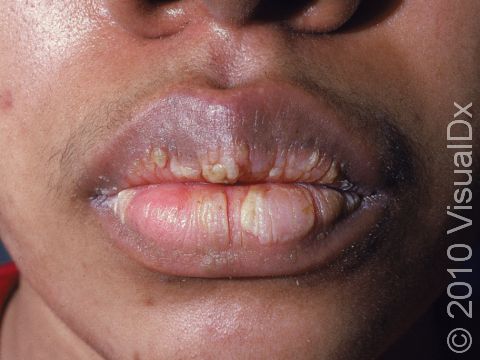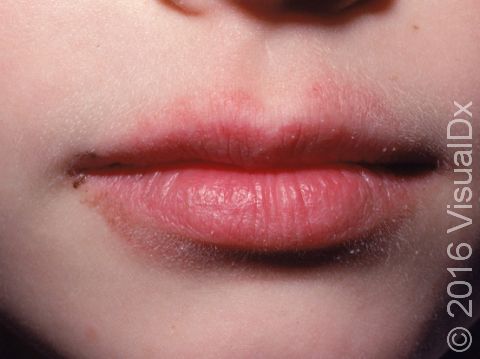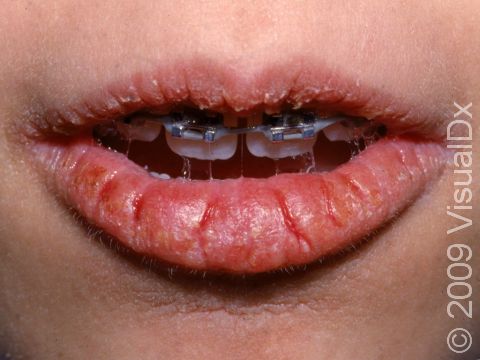Chapped Lips (Cheilitis)
Cheilitis is the medical term for chapped lips, where the lips themselves and the skin
around the lips become red, sensitive, scaly, and sometimes swollen. Chapped lips sometimes look like a pink rash around the mouth. The most common cause of chapped lips is lip-licking, but some medications can also cause this condition. In teens, the creams used to treat acne, such as retinoids and benzoyl peroxide, can cause chapped lips.
Some people are more susceptible to chapped lips in cold or dry weather. Being dehydrated or sick in general can make this condition worse.
Chapped lips are not contagious.
Who's At Risk?
Anyone can get chapped lips, but lip-licking cheilitis is most common in children and young teens aged 7–15.
Signs & Symptoms
Chapped lips is manifested by scaling (with or without cracks) and mild to moderate swelling.
Self-Care Guidelines
To treat chapped lips:
- Discontinue use of the causing medications, if possible.
- If medications cannot be discontinued, apply petroleum jelly as often as needed.
- Avoid lip licking because this will only worsen the condition.
- Avoid “medicated” lip preparations because they increase the risk of developing an allergic reaction.
Treatments
Lip-licking cheilitis is best treated with avoidance of the licking behavior. Drug-induced chapped lips is treated with avoidance of the offending drug, but if this is not possible, frequent application of petroleum jelly may help ease lip pain and irritation.
Visit Urgency
See your primary care physician or dermatologist if you notice persistent scaling of the lips.
References
Bolognia, Jean L., ed. Dermatology, pp.1090-1091. New York: Mosby, 2003.
Freedberg, Irwin M., ed. Fitzpatrick’s Dermatology in General Medicine. 6th ed, pp.698. New York: McGraw-Hill, 2003.
Last modified on August 16th, 2022 at 2:45 pm

Not sure what to look for?
Try our new Rash and Skin Condition Finder



